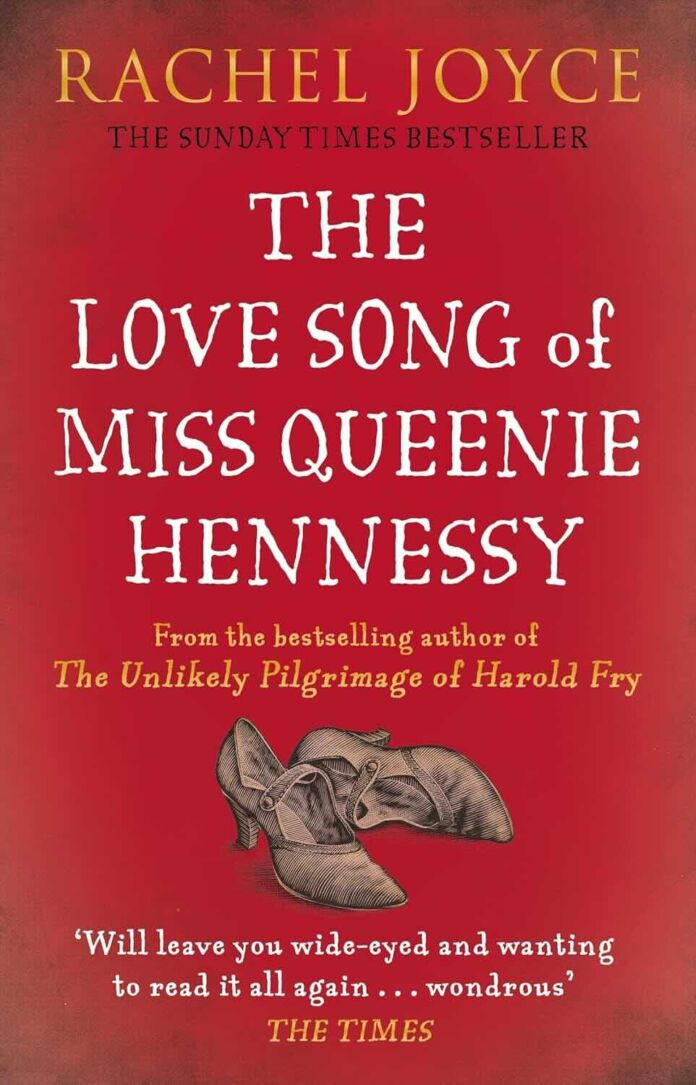Rachel Joyce’s The Love Song of Miss Queenie Hennessy serves as both a companion piece to her bestselling debut The Unlikely Pilgrimage of Harold Fry and a standalone masterpiece that delves deep into themes of unrequited love, redemption, and the power of waiting. While Harold walks the length of England to reach her, Queenie crafts her final confession from her hospice bed, revealing the intricate web of secrets that has bound them together for twenty years.
The Art of Parallel Journeys
What makes this novel particularly compelling is how Joyce crafts two simultaneous journeys – Harold’s physical pilgrimage across England and Queenie’s emotional voyage through her memories. While Harold battles blisters and weather, Queenie confronts her past with the help of a mysterious nun, Sister Mary Inconnue, whose very name (meaning “unknown” in French) adds layers of spiritual symbolism to the narrative.
Structure and Style: A Masterclass in Emotional Resonance
Joyce employs a unique narrative structure, weaving between present-day scenes at St. Bernadine’s Hospice and Queenie’s memories of her time in Kingsbridge. The writing is deceptively simple yet profound, much like Queenie’s beloved sea garden – seemingly ordinary on the surface but revealing deeper meanings upon closer inspection.
Notable Strengths
- Masterful character development, particularly of the hospice residents
- Rich symbolism through Queenie’s sea garden
- Delicate handling of heavy themes like death, regret, and forgiveness
- Brilliant parallel storytelling that complements Harold Fry without rehashing it
Areas for Improvement
- The pacing occasionally slows in the middle sections
- Some readers might find the hospice setting overwhelming
- The mysterious Sister Mary Inconnue subplot may feel too metaphysical for some
Beyond Harold Fry: A Trilogy of Perspectives
This novel stands as the second part of what has become known as the Harold Fry trilogy, with the first being The Unlikely Pilgrimage of Harold Fry and the third being Maureen Fry and the Angel of the North, which focuses on Harold’s wife. Each book offers a different perspective on the same events, creating a rich tapestry of human experience and understanding.
The Heart of the Story: Queenie’s Sea Garden
One of the most beautiful aspects of the novel is Queenie’s sea garden, which serves as both literal setting and metaphor for her life. Joyce’s description of this evolving artwork, created from found objects and coastal flora, becomes a powerful symbol of how beauty can emerge from brokenness.
Characters Who Stay With You
The supporting cast at St. Bernadine’s Hospice deserves special mention. From the vibrant Finty to the scholarly Mr. Henderson, each character feels fully realized and contributes meaningfully to the story’s emotional resonance. Joyce excels at showing how community can form in the most unlikely places.
Themes and Symbolism
Love in Its Many Forms
The novel explores various types of love:
- Unrequited romantic love (Queenie for Harold)
- Parental love (Harold and Maureen for David)
- Friendship among the hospice residents
- Self-love and acceptance
The Power of Waiting
Unlike many contemporary novels that focus on action and movement, Joyce dares to explore the profound act of waiting. Queenie’s physical stillness contrasts with her internal journey, suggesting that meaningful change can happen even in apparent stasis.
Technical Mastery
Joyce’s prose shines in its precision and restraint. She never overwrites emotional scenes, instead allowing simple details to carry the weight of feeling. The parallel structure between Harold’s walking and Queenie’s writing creates a satisfying rhythm throughout the novel.
Impact and Relevance
In our fast-paced world, this novel offers a meditation on slowing down and facing our truths. It’s particularly relevant in how it addresses end-of-life care and the dignity of those facing death.
Comparison to Contemporary Works
While it shares themes with works like Kazuo Ishiguro’s The Remains of the Day and Julian Barnes’s The Sense of an Ending, Joyce’s novel stands apart in its hopeful tone and belief in redemption.
Final Verdict: A Profound Achievement
The Love Song of Miss Queenie Hennessy succeeds both as a companion piece to Harold Fry and as a standalone novel. While some readers might find the pace challenging, the emotional payoff is worth the investment. Joyce has created a deeply moving exploration of love, regret, and the possibility of finding joy in unexpected places.
Who Should Read This Book
- Fans of literary fiction focusing on character development
- Readers who enjoyed The Unlikely Pilgrimage of Harold Fry
- Those interested in stories about end-of-life experiences
- Anyone who appreciates gentle yet profound explorations of human nature
Reading Guide
For the best experience, read The Unlikely Pilgrimage of Harold Fry first, though it’s not strictly necessary. The third book, Maureen Fry and the Angel of the North, can be read afterward to complete the trilogy’s perspective.
This tender, thoughtful novel reminds us that every life, no matter how seemingly ordinary, contains multitudes of stories worth telling. Joyce has crafted a beautiful meditation on love, loss, and the courage it takes to face our truths before it’s too late.





